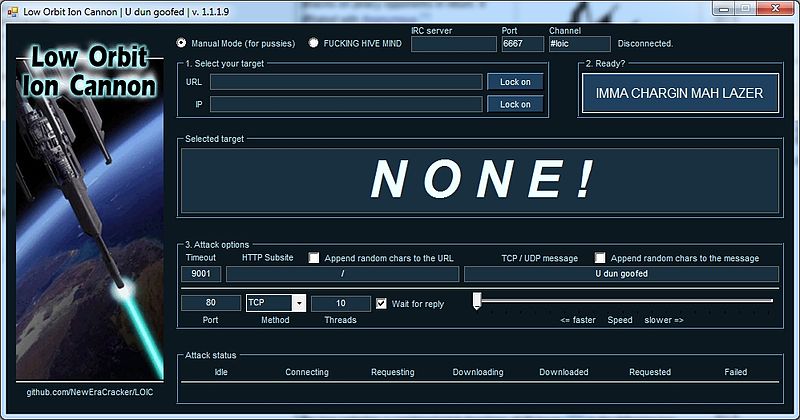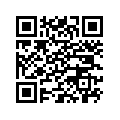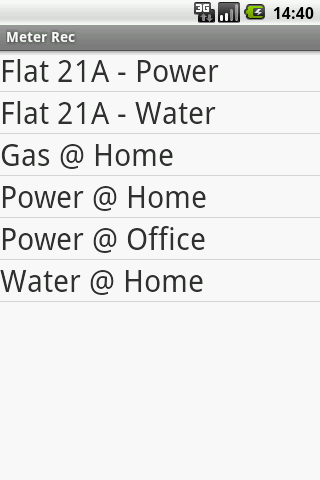I was horrified to see that the Department of Homeland Security has begun to seize the domains of copyright infringing websites. Now I’m all for copyright protection and theft is theft but this kinda of censorship is a slippery slope.
But it did get me thinking…
Since it is only the DNS entries that have been seized and you are still able to visit these sites if you know their IP address, wouldn’t be nice to have a DNS like way of remembering these IP addresses?
And so I give you the 4LW ‘protocol’ (4 little words).
Basically you grab 256 words from the dictionary in the S/KEY RFC, then with a simple lookup table (where each octet of the IP address is mapped to a word in the dictionary) you can convert any IP address into 4 hopefully easy to remember words and back again.
For example:
The IP address for rabidgremlin.com is 174.143.242.193, if you run this through 4LW you get the following phrase: LICK GORY ULAN MUTT
Some others:
210.55.180.158 (google.com) = ROOM RED LULU IDEA
72.30.2.43 (yahoo.com)= ACHE ION ANA NAY
72.21.210.250 (amazon.com)= ACHE FUM ROOM WENT
65.49.90.35 (whitehouse.gov) = TEN OWL BLUR LAM
184.84.165.161 (dhs.gov) = MASH BAWD KANE JERK
Of course this is bit of a toy idea (only good for IPv4 etc) but the romantic in me can see these little 4 word phrases hidden away in cryptic emails or scrawled as defiant graffiti on buildings of certain organizations :)
For those of you who are interested here is the dictionary for 4LW. I created it by grabbing every 8th word (starting with the first one) from the S/KEY dictionary. A = 0, AID = 1, YARN=255 etc.
{ "A", "AID", "ANA", "ARC", "AT", "AWN", "BAR", "BET", "BOG", "BUG", "CAB", "COD", "COY", "DAD",
"DES", "DOE", "DUE", "EGO", "ETC", "FAT", "FIR", "FUM", "GAP", "GIL", "GUY", "HAP", "HER", "HIT", "HOW", "ICY", "ION",
"IVY", "JET", "JOY", "KIM", "LAM", "LEN", "LIT", "LOW", "MAN", "MEL", "MOD", "MUG", "NAY", "NIP", "NOV", "OAR", "OIL",
"ORR", "OWL", "PAP", "PEP", "PIT", "PRO", "RAG", "RED", "RIP", "RUB", "SAG", "SEA", "SIN", "SO", "SPY", "TAD", "TEN",
"TO", "TOY", "UP", "WAG", "WET", "WOW", "YES", "ACHE", "ADEN", "AIDS", "ALLY", "AMES", "ANNA", "ARGO", "AUNT", "AWAY",
"BAIT", "BAND", "BARN", "BAWD", "BEAU", "BELT", "BETA", "BILL", "BLED", "BLUR", "BOHR", "BONE", "BORE", "BOYD", "BRIG",
"BULL", "BURT", "CAFE", "CANE", "CASH", "CHAD", "CHIN", "CLAD", "CLUB", "CODE", "COLT", "CORD", "CRAG", "CUBE", "CURL",
"DANG", "DATE", "DEAN", "DEFY", "DIET", "DISH", "DOME", "DOUR", "DRUB", "DUKE", "EACH", "EDDY", "ELBA", "EROS", "FAIL",
"FAST", "FELL", "FILE", "FISH", "FLAT", "FLOW", "FOLK", "FORK", "FRAY", "FULL", "GAGE", "GAME", "GAVE", "GIBE", "GIST",
"GLOW", "GOES", "GORY", "GREW", "GULF", "HAAG", "HALO", "HARM", "HAWK", "HEED", "HERE", "HIKE", "HOBO", "HONE", "HOST",
"HUFF", "HURD", "IDEA", "IOWA", "JACK", "JERK", "JOBS", "JOVE", "JUNE", "KANE", "KERN", "KISS", "KNOW", "LACK", "LAME",
"LATE", "LEAK", "LENT", "LICK", "LILA", "LINK", "LOAM", "LONG", "LOST", "LULU", "LYLE", "MAIL", "MANN", "MASH", "MEAD",
"MEMO", "MILD", "MINI", "MOAN", "MONA", "MORN", "MUDD", "MUTT", "NASH", "NEIL", "NIBS", "NOEL", "NOUN", "ODIN", "OLIN",
"ONUS", "OUTS", "QUOD", "RAIN", "RAYS", "REEK", "RICE", "RINK", "ROCK", "ROOM", "ROVE", "RULE", "RUST", "SALK", "SAUL",
"SEAM", "SELF", "SHAW", "SHOW", "SILK", "SITE", "SKIT", "SLIM", "SLUR", "SOAK", "SOME", "SOWN", "STIR", "SUMS", "SWAN",
"TAKE", "TEAL", "TEND", "THEE", "TICK", "TIME", "TOIL", "TOOT", "TRAM", "TROT", "TUNE", "ULAN", "VAIN", "VEIN", "VINE",
"WAIL", "WANE", "WAST", "WEAN", "WENT", "WHET", "WINE", "WOLF", "WORN", "YARN" }
UPDATE: Wow, I got a surprisingly big response to this post, making it to the front-page of Hacker News and Reddit, here are some updates:



 I’ve just released my first purchasable app on the Android market.
I’ve just released my first purchasable app on the Android market.


